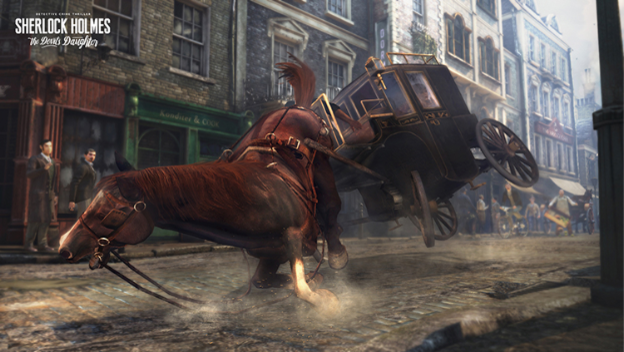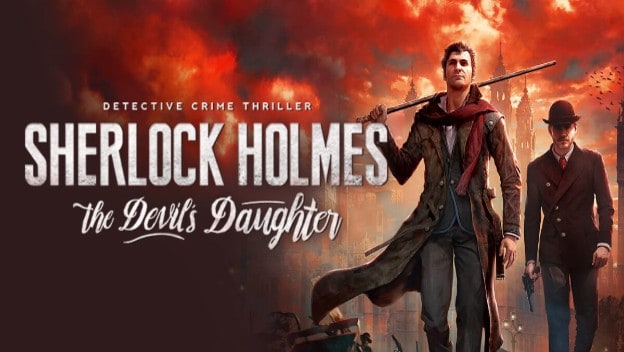Warning: Spoilers, kind of, for Sherlock Holmes: The Devil’s Daughter ahead!
Sherlock Holmes: The Devil’s Daughter is a cool game, but it has nothing to do with the original Arthur C. Doyle series. I think it’s kind of silly to expect any modern adaptation of Sherlock to be true to the original. If you want something closer to the original, check out the BBC version from 1984, The Adventures of Sherlock Holmes , or the 2010 one, Sherlock . Sherlock Holmes has become more than just a character in a famous 19 th century novel series, he is a cultural phenomenon – so much so that Holmes is what we make of him. Currently, what defines Holmes is his intelligence, sharp wit, and neurotic behavior. As long as adaptations hold to these, they should be allowed to use the name of Sherlock Holmes.
Sherlock Holmes: The Devil’s Daughter certainly stays true to the three defining traits and in very innovative ways. You can see it in the released promotional videos like this gameplay walkthrough and this B-Roll . The method this game uses to portray Sherlock’s intelligence is my favorite part so far; it shows rather than tells in a way that only a video game can do. The game appears to pause and zoom in on a character, and the player has to identify specific areas on the person to discover clues. Somebody having red eyes, for example, is catalogued in the player’s character profile notebook, but the reasoning is left to the player. When the clue is given an immediate solution, however, like Tom’s malformed arm being titled ‘malnutrition’, it is often before the player can make the connection themselves. This may be to show Sherlock’s lightening fast intelligence, but I find it undermines the puzzles of the game itself. I like figuring out things for myself, thank you.
As to Sherlock’s sharp wit, the game does this well too. After the clues are gathered, the player is able to somewhat control the conversation, much like a Telltale game, and Sherlock’s wit comes through in nearly everything he says. Indeed, the player is able to interrupt Tom’s ramblings to point out yet another clue and get the answers faster. This seems to be possible with all suspects and characters, making for a very enjoyable play through with such a fascinating character as Sherlock.

Sherlock’s beloved neurotic behavior makes an appearance too, in a way that is nearly as old as Doyle’s books. For example, the arrival of Tom is heralded by Sherlock’s usual eloquent way of saying, “piss off, I’m busy brooding,” or “woe is me, I am surrounded by idiots.” Today, we can diagnose such behavior, but knowing what it is makes no less amusing to watch. Sherlock will always say what normal people would never dare, the closer to the truth, the better.
Just like Robert Downy Jr.’s portrayal of Holmes , The Devil’s Daughter has a neurotic, sharp-witted genius as its star. It includes his nasty but true quips and wit in the dialogue with characters, sometimes at the behest of the player. Even his intelligence is shown in a way only a video game can achieve. As such, I very much look forward to this game even if it doesn’t portray Doyle’s original version of Sherlock Holmes.
